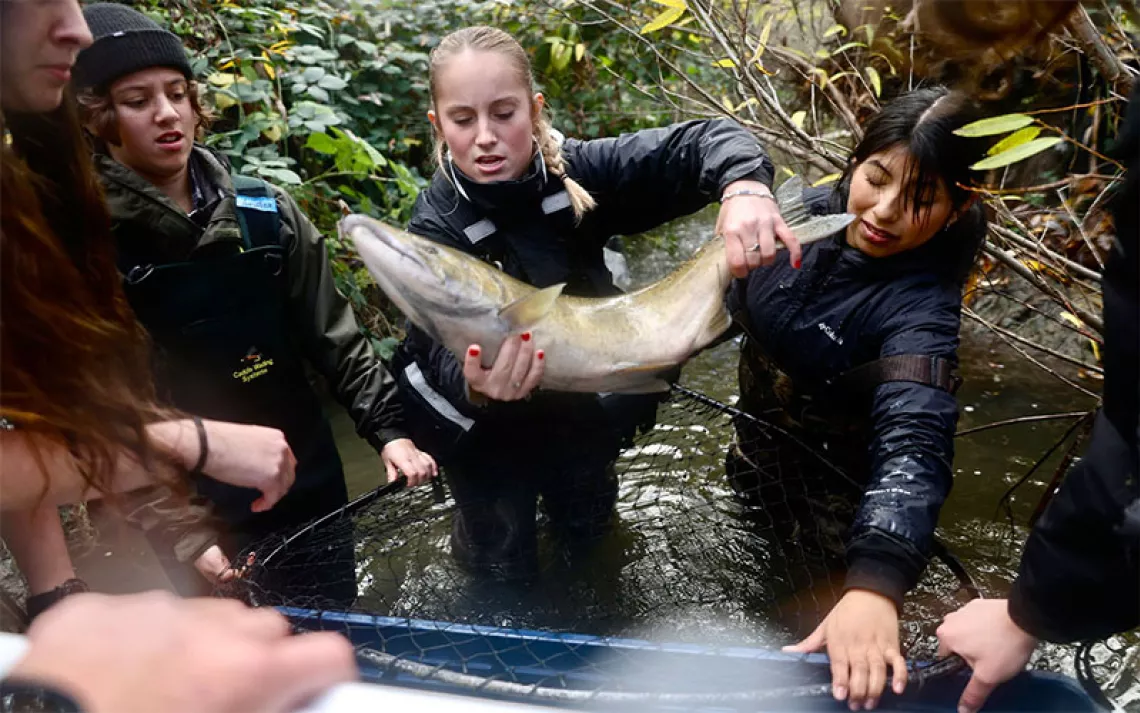The Thylacines Among Us

A thylacine skeleton. | Photograph courtesy of CFZ
Eighty years ago this September, an animal died in Hobart Zoo. The keepers called him Benjamin. He was a Tasmanian tiger—a thylacine—then the world’s largest marsupial predator.
His kind had once been common throughout Tasmania. But a century and a half of human persecution, and, some believe, a disease epidemic, had taken a heavy toll. When Benjamin died, the thylacine was officially declared extinct.
Earlier this year, a group of explorers from Devon, England, flew out to Tasmania. They, like many other researchers who have been to Australia’s southernmost point in the past 20 years, believe that somewhere out there in the Tasmanian wilds, the thylacine still exists.
“It’s the second time I’ve been out to Tasmania [looking for thylacines],” says Richard Freeman from the Centre for Fortean Zoology, an organization that specializes in unknown or supposedly extinct animals. “I’ve interviewed many excellent witnesses—experienced bushmen, a former logger, and a government-licensed shooter who deals with feral cats and keeps wallaby numbers in check. I’ve also seen some very convincing photographs of what look like thylacine paw prints.”
Thylacine means “dog-headed pouched one” in Greek. These animals lived in Tasmania for around 4 million years, and like their ancestors, which evolved 23 million years ago, had similar characteristics to the dogs and wolves of the Northern Hemisphere—although this is an example of convergent evolution rather than a genetic relationship.
The thylacine started to suffer, as did every other predator worldwide, once humans realized there was money to be made from putting farm animals into pens. At the beginning of the 19th century, Europeans started settling in Tasmania and brought their farming practices with them. Predators, they believed, were bad for business and had to be removed.
Some thylacine experts believe that a distemper-like disease passed on by feral dogs finished the thylacine off. As is often the case with historical animal extinctions, no one knows for sure.
Freeman doesn’t accept that the thylacine is gone. He believes that Tasmania’s geography would enable such an animal to live, in small numbers, away from human settlements. “Tasmania is 68,400 square kilometers, but the human population is just over half a million, and most of them live in the east,” he says. “There’s masses of wilderness and many prey species to support a medium-size predator.”
For Freeman, the sheer number of eyewitness accounts suggests that the thylacine is still out there. And he’s not the only one who thinks so.
Earlier this year, Dr. Stephen Sleightholme, project director of the International Thylacine Specimen Database, and Cameron Campbell, curator of the online Thylacine Museum, published a research paper in the Australian Zoologist journal claiming that the thylacine lived on, much longer than the official extinction date.
“The paper provides additional evidence to suggest the species may have possibly survived until the early 1980s,” Sleightholme and Campbell state. “In fact, it does not discredit the view that a small population may still survive.”
Sleightholme and Campbell’s research is based on the retrospective analysis of 1,167 georeferenced capture, kill, and confirmed sighting reports, from 1900 to 1940. “It shows that there were three, possibly four, surviving thylacine populations into the 1930s,” Sleightholme says.
There are thylacine encounters in the historical records, so why no conclusive proof that the animal still exists? No definitive video footage or camera close-ups? Not a single captured, or even a dead, thylacine?
Zoologist Chris Coupland from the Thylacine Research Unit in Tasmania thinks he knows. A while back, he took life-size paintings of thylacines, backed them on hardboard, and put the 2-D models in the Tasmanian woods.
Coupland then showed the models to a few random Tasmanians. Obscured in the undergrowth or on rocky ledges, most people either saw nothing, or thought the fake thylacines were foxes or cats.
“Our test showed that camouflage works,” Coupland says. “The European red fox has been in Tasmania since 2001, and no one ever sees it. Thylacines had to adapt to being treated as vermin by humans. Natural selection would have produced elusive individuals. You could walk right past a thylacine and not notice it.”
Tasmanian zoologist Nick Mooney agrees. “The thylacine may not turn up even if it’s there,” he says. “We are still awfully bad at finding very rare things.”
Mooney adds that modern sightings in Tasmania are credible, but none are confirmed. “It’s likely that thylacines persisted for decades after the 1930s,” he says. “Maybe longer if the animal had some bizarre resistance to inbreeding.”
Sleightholme has another problem with the 1936 extinction date. “Logic dictates that a secretive nocturnal animal, concealed amongst vast tracts of extremely dense vegetation, would persist well beyond the last known capture on the fringe of its habitat,” he says.
The hunt for definitive proof continues. On his most recent visit, Freeman found what he hopes is thylacine dung. “It has all the characteristics, and it is now under analysis at Copenhagen University,” Freeman says. He wants to go to Tasmania again next year to continue the search but needs funding to conduct his research more efficiently.
“We need more technology and much more time in the field,” Freeman says. “It took about seven years of continual searching before the first footage of snow leopards was taken, which gives you some idea of how difficult filming elusive animals can be.”
Freeman would like to deploy 50 or so camera traps all over Tasmania for a year and link them to computers so that the film or pictures can be uploaded in real time.
“It is vital that the thylacine is found, to protect it,” Freeman says. “It is such an iconic creature, and such a discovery would be a boon for conservation in general.”
 The Magazine of The Sierra Club
The Magazine of The Sierra Club



